Product Impact Cycle
Concept Overview:

The Product Impact Cycle is an integrative concept meant to improve product impact by combining principles from Product Development, Design Thinking, Lean Startup Principles, and Hypothesis-Driven Development. It examines products by applying the PDCA (Plan-Do-Check-Act) Cycle to three interconnected perspectives—Market Potential, Customer Relevance, and User Experience. All to ensure a comprehensive approach to product innovation and continued success.
1. Market Potential:
- Focus: Explores market dynamics, technology trends, competitor landscape, and legislative factors.
- Objective: To assess the feasibility of the product idea, shape the product concept for optimal success, and continuously adapt to market feedback.
- Process: This stage is characterized by a continuous cycle of formulating the initial product concept, understanding customers, stakeholders, and market dynamics, identifying unresolved needs, defining marketplace hypotheses, shaping, and conducting marketplace experiments, and deciding whether to pivot or persevere based on experiment outcomes. This iterative process ensures the product concept remains dynamic and responsive to market realities.
2. Customer Relevance:
- Focus: Targets the alignment of the product with the customers’ pain points and desires within the complete value chain as defined by the product concept.
- Objective: To optimize how well the product addresses customer pain points and desires, ensuring it delivers value throughout the entire customer journey.
- Process: Extends beyond identifying customer needs to developing hypotheses and designing experiments related to the customer experience. This involves continuous engagement with customers to refine the product offering, ensuring it evolves in line with customer expectations and needs.
3. User Experience:
- Focus: Concentrates on crafting a seamless and delightful interaction between the user and the product.
- Objective: To integrate insights from Market Potential and Customer Relevance into providing an intuitive and enjoyable user experience.
- Process: Involves designing, developing, and testing of the user interface and interactions, considering all touchpoints in the user’s journey, expanding across all process steps and interfaces. Feedback from usability testing and user interactions informs ongoing refinements, ensuring the product remains user-centric.
Integration Through Collaboration:
The Product Impact Cycle fosters collaboration across disciplines, ensuring insights and knowledge from Product Development, Design Thinking, Lean Startup Principles, and Hypothesis-Driven Development are shared and applied across the three perspectives. This collaborative approach promotes a dynamic feedback loop, enhancing the product’s market fit and user satisfaction.
Application:
The Product Impact Cycle is applied continuously throughout the product lifecycle, allowing for constant reinvention and adaptation of the product to maintain and increase its relevance in the market. This ensures the product not only meets current market and customer needs but anticipates future trends and changes, fostering long-term success and innovation.
Benefits:
- Provides a holistic and adaptable framework for product development, leveraging diverse methodologies for comprehensive insight.
- Encourages continuous learning and adaptation based on real-world feedback and data.
- Enhances product relevance and competitiveness through ongoing market and customer engagement.
- Promotes a culture of innovation and cross-functional collaboration, driving product success from concept to delivery.
In summary, the Product Impact Cycle ensures that products are developed with a deep understanding of their ecosystem, driving innovation and success by harmonizing market potential, customer relevance, and user experience through continuous collaboration and iteration.